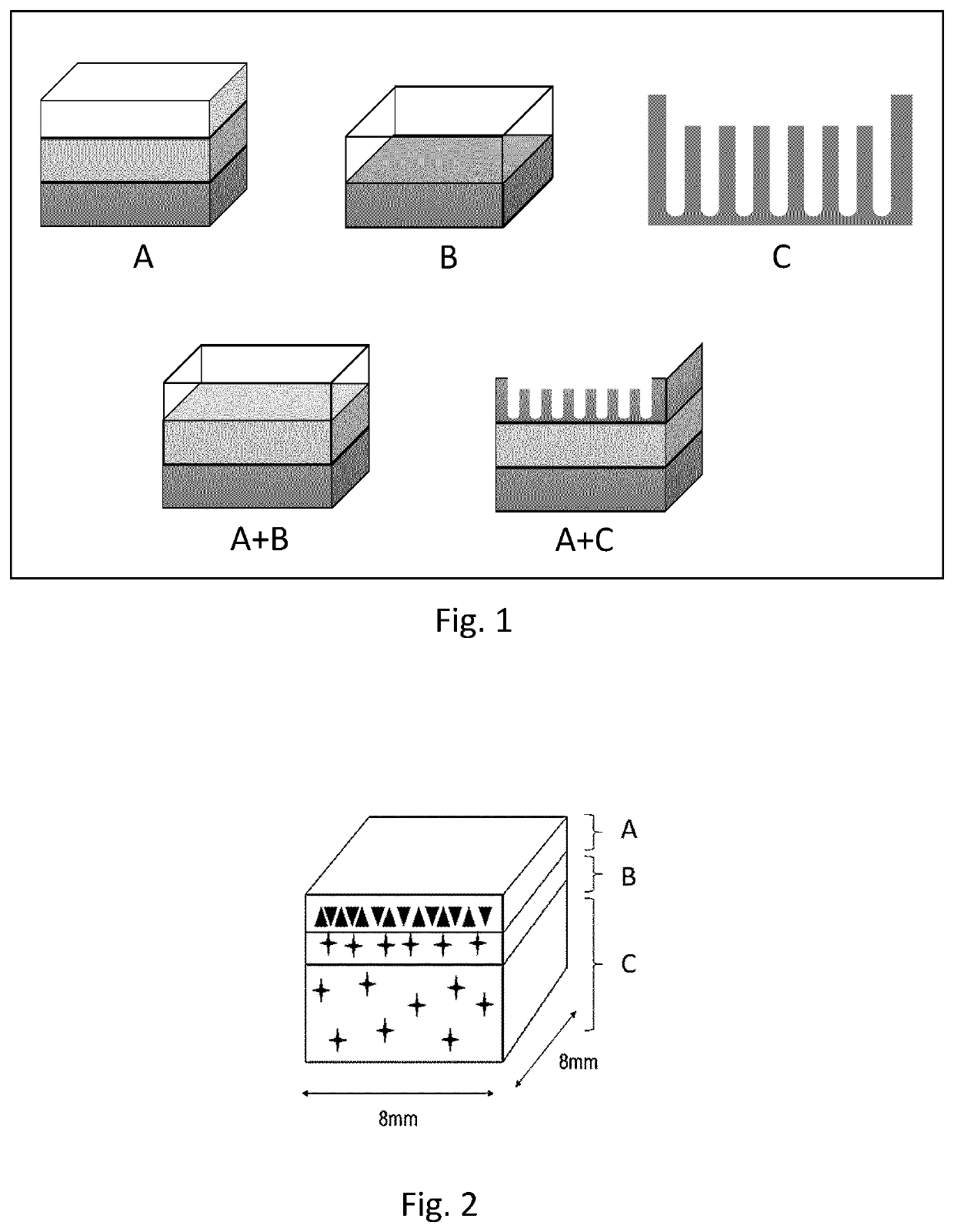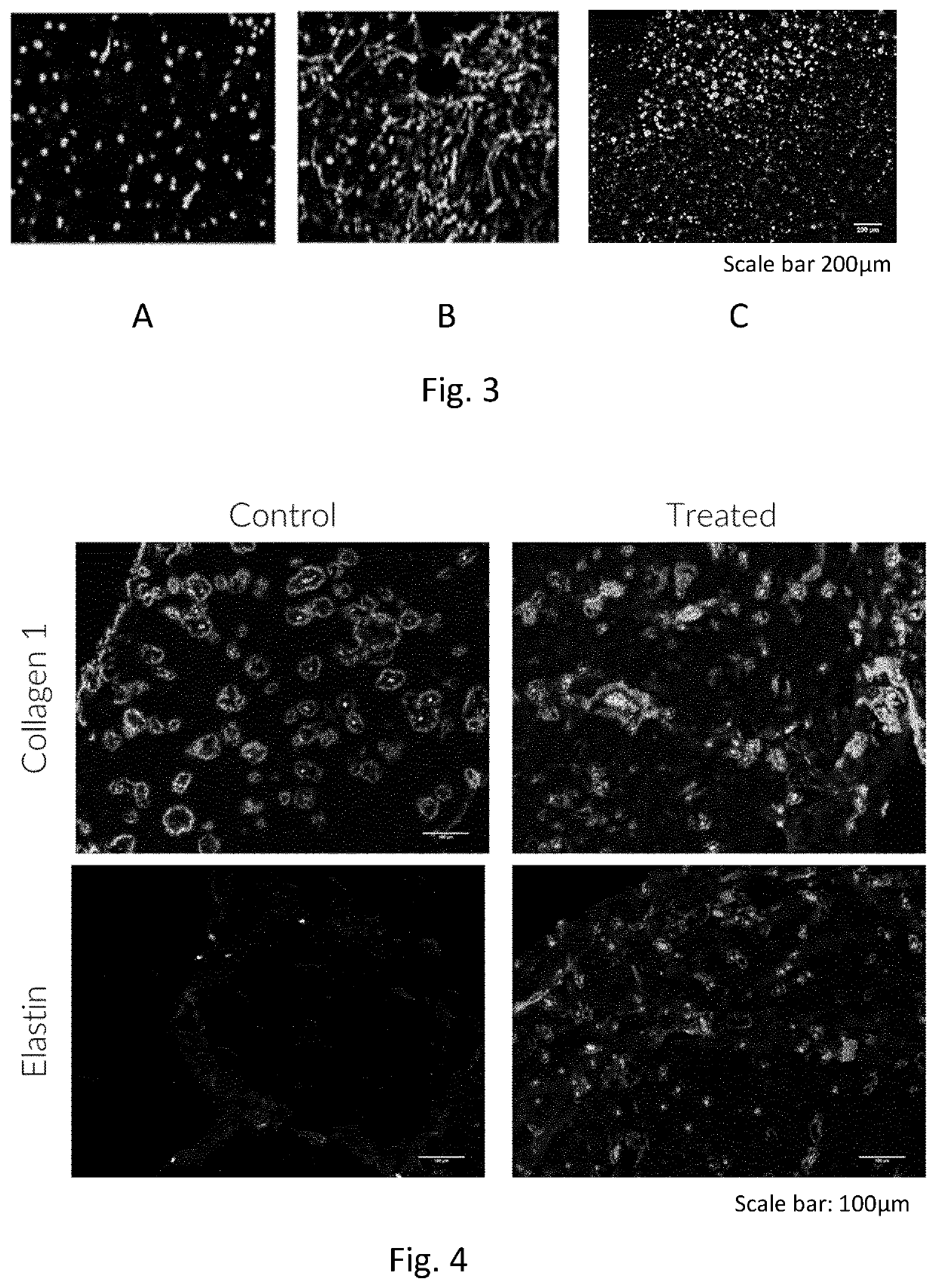3D Bioprinted Skin Tissue Model
a skin tissue and 3d printing technology, applied in the field of 3d bioprinting of skin tissue models, can solve the problems of labour-intensive methods and inability to control the construction of in vitro models
- Summary
- Abstract
- Description
- Claims
- Application Information
AI Technical Summary
Benefits of technology
Problems solved by technology
Method used
Image
Examples
example of
Production Procedure
[0091]Below is an example of producing the skin tissue model with a bioink A, cell type A and an additional cell type A and one factor A:
[0092]Design of model (s): To design the model any type of 3D-modeling software can be utilized to either modify a scanned model, such as a CT- or MR-scan, or to create a model from scratch. When creating models from scratch different types of compartments can be used as building blocks. FIG. 1 exemplifies 3 types of compartment types and two examples of how these can be combined to create a model.[0093]A. Block Compartments. These blocks can have different dimensions, and either be stacked and / or placed within each other to form different compartments within the model. Using robust bioink formulations able to retain the shape of the blocks during the print blocks can be utilized to form one or several micro compartments within or throughout a model. They can also be used to form gradients by enabling deposition of different bio...
PUM
| Property | Measurement | Unit |
|---|---|---|
| light wavelength | aaaaa | aaaaa |
| temperature | aaaaa | aaaaa |
| temperature | aaaaa | aaaaa |
Abstract
Description
Claims
Application Information
 Login to View More
Login to View More - R&D
- Intellectual Property
- Life Sciences
- Materials
- Tech Scout
- Unparalleled Data Quality
- Higher Quality Content
- 60% Fewer Hallucinations
Browse by: Latest US Patents, China's latest patents, Technical Efficacy Thesaurus, Application Domain, Technology Topic, Popular Technical Reports.
© 2025 PatSnap. All rights reserved.Legal|Privacy policy|Modern Slavery Act Transparency Statement|Sitemap|About US| Contact US: help@patsnap.com



